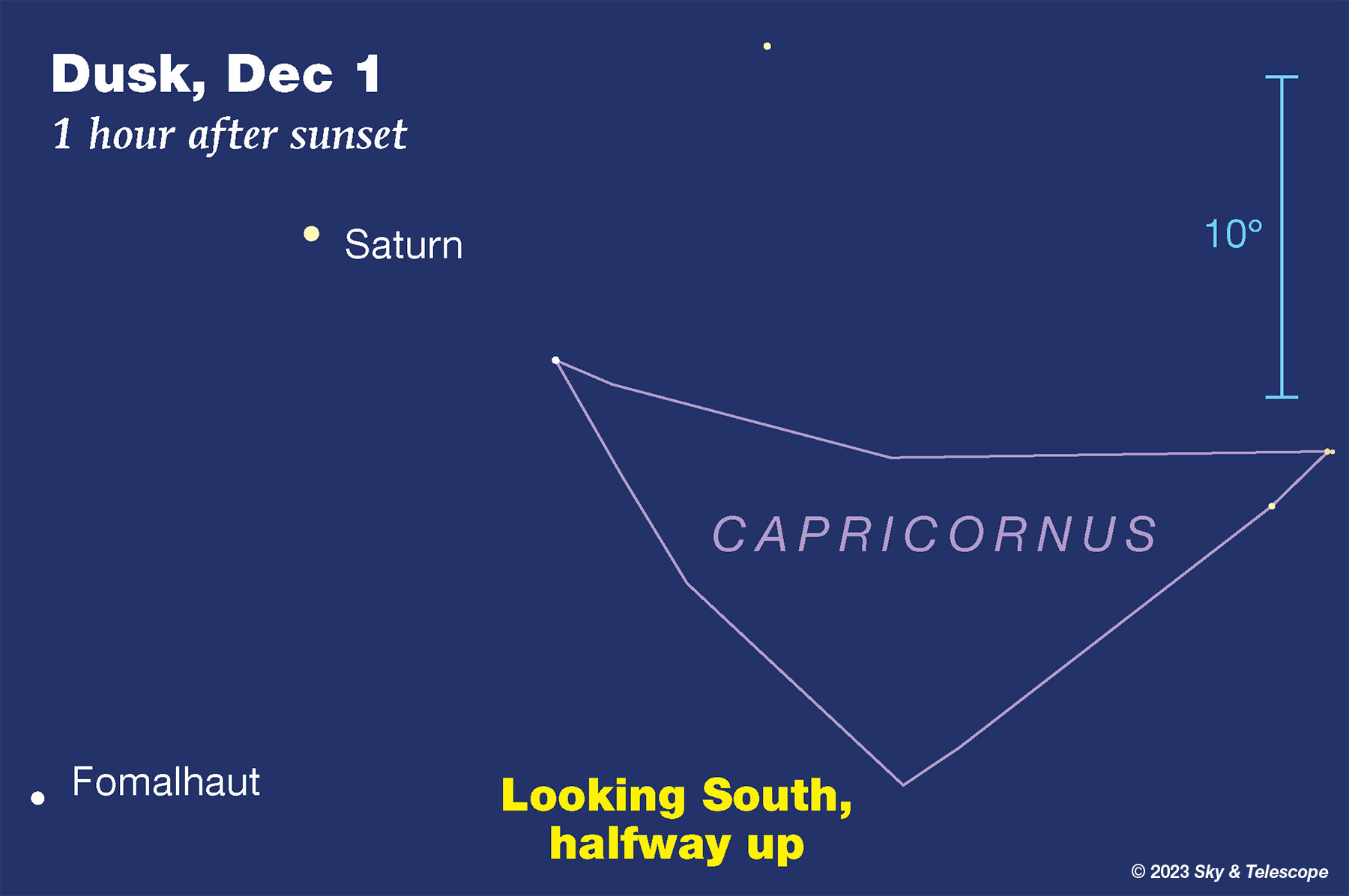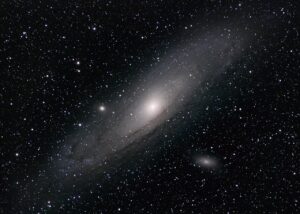Special to CosmicTribune.com, November 28, 2023, 2023
Excerpts from weekly Sky&Telescope report.
TUESDAY, NOVEMBER 28
■ The Moon, just past full, rises in the northeast in mid-twilight. Bright Capella, magnitude 0, sparkles about two fists to the Moon’s upper left. As night deepens, watch for Beta Tauri, magnitude 1.6, to come into view only about a fifth as far to the Moon’s upper right.
Moonrise tonight is special. That’s because the Moon is just about as far north on the celestial sphere as you can ever possibly see it.
WEDNESDAY, NOVEMBER 29
■ As dawn begins to brighten Thursday morning, look east for Venus having a rather distant conjunction with Spica as shown below. They’re 4¼° apart.

THURSDAY, NOVEMBER 30
■ Now that the Pleiades and (below them) Aldebaran are shining due east after dark, can Orion be far behind? Orion’s entire iconic figure, formed by its seven brightest stars, takes about 1 hour 20 minutes to clear the eastern horizon. By 9 or 10 p.m. it’s up in fine pre-winter view.
FRIDAY, DECEMBER 1
■ Two faint fuzzies naked-eye: The Andromeda Galaxy (M31) and the Perseus Double Cluster are two of the most famous deep-sky objects. They’re both cataloged as 4th magnitude, and in a fairly good sky you can see each with the unaided eye. Binoculars make them easier.
They’re located only 22° apart, very high toward the east early these evenings — to the right of Cassiopeia and closer below Cassiopeia, respectively.
But they look rather different, the more so the darker your sky.

Catch Saturn and Fomalhaut in the south as the stars come out. Once the sky is completely dark, look for the big, dim, boat-shaped pattern of Capricornus to their right. (The blue 10° scale is about the width of your fist held at arm’s length.) Alpha Capricorni at the pattern’s west (right) end is a wide optical double. Binoculars will show that its two orange stars are currently aligned almost horizontally.
SATURDAY, DECEMBER 2
■ The Summer Triangle is still pretty high right after dark. Vega, its brightest star, shines in the west-southwest. Deneb is about two fists above it. Altair is farther to Vega’s left.
■ Polaris is, as always, due north. This is the time of year when the Little Dipper extends lower left from it in early evening. The only moderately bright stars of the Little Dipper are Polaris and Kochab, the star marking the lip of its bowl.
By about 11 p.m. Kochab has swung to be straight under Polaris.

SUNDAY, DECEMBER 3
■ M31, the Andromeda Galaxy, passes your zenith sometime around 8 p.m. (if you live in the mid-northern latitudes). The exact time depends on how far east or west you live in your time zone. Binoculars will reveal the dim little glow of M31 just off the knee of the Andromeda constellation’s stick figure.
■ The waning Moon, nearly last quarter, rises around 10 or 11 p.m. in the east-southeast. As it gains height, catch an early sighting of Regulus, usually thought of as a star of late winter and spring, 3° or 4° to the Moon’s right.
PLANET ROUNDUP
Venus, brilliant at magnitude –4.2, shines as the “Morning Star” in the southeast before and during dawn. It rises above the eastern horizon about 2 hours before dawn’s first light.
This week Venus is passing Spica, which is only 1% as bright. They appear closest together on the morning of the 30th, with Spica now 4° to Venus’s lower right.
Jupiter (magnitude –2.8, in Aries) is that bright white dot dominating the east in early evening. It stands highest in the south around 9 or 10 p.m. In a telescope Jupiter is still a big 48 or 47 arcseconds wide.

You must be logged in to post a comment Login